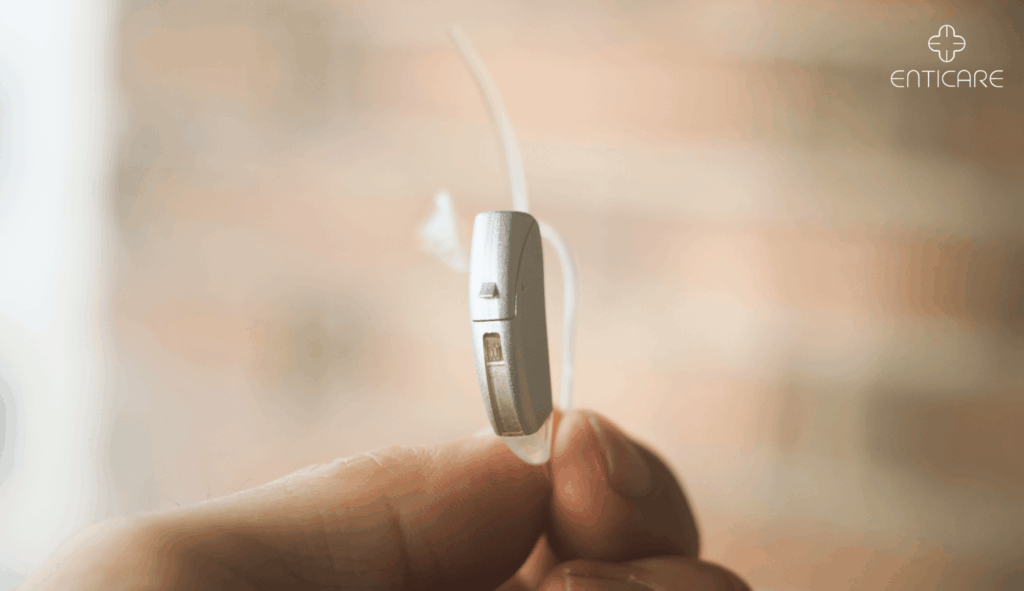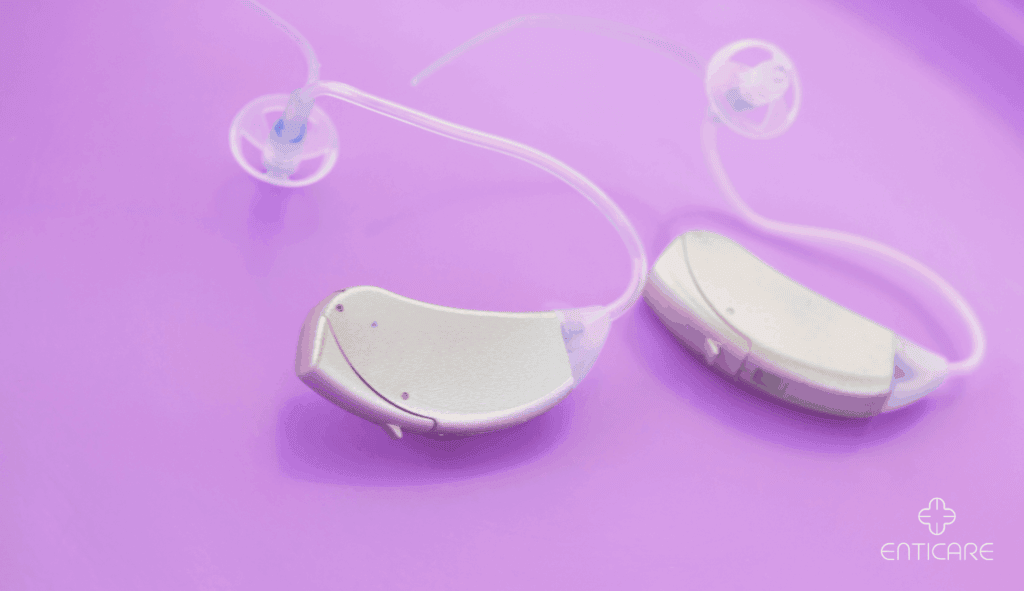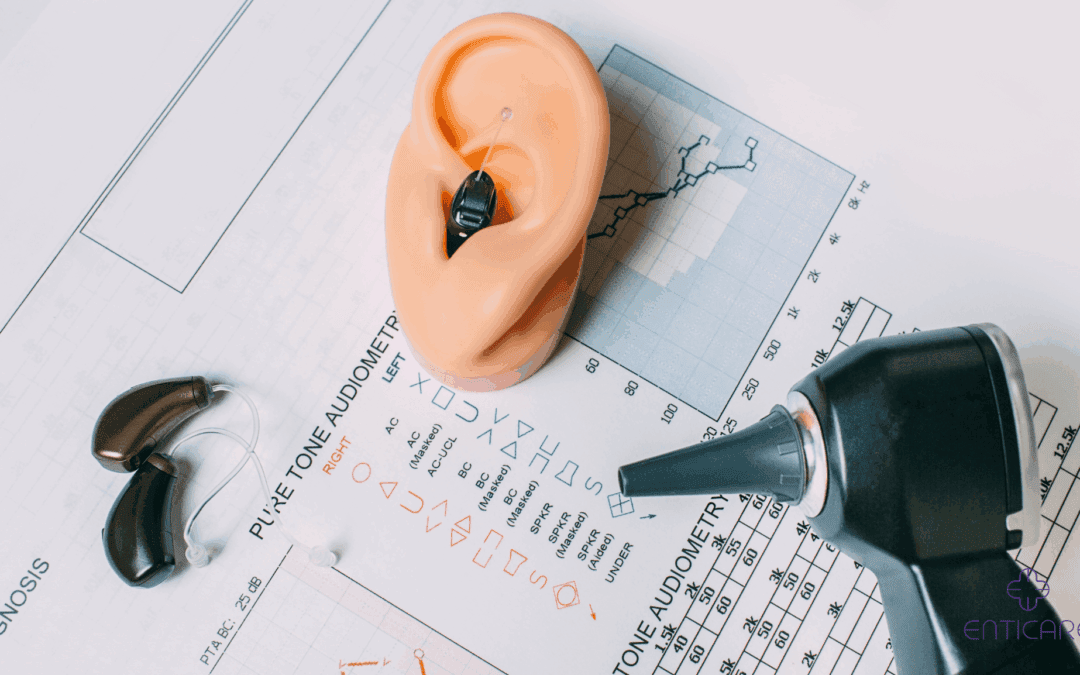If you’re struggling with hearing loss, you know how vital hearing aids can be for improving quality of life. But how much do you really know about the small, complex devices that power your hearing experience? Understanding the various parts of hearing aids will help you make informed decisions about your hearing health, whether you’re new to hearing aids or an experienced user.
The basic hearing aid parts include the microphone, amplifier, speaker, and battery. Each of these components plays a crucial role in enhancing the user’s ability to hear sounds clearly.
In this blog post, we’ll dive into the specific components of a hearing aid, why they matter, and how each part contributes to better hearing. Read on to gain a comprehensive understanding of how hearing aids work.

The Microphone: Capturing Sound from Your Environment
How It Works
The microphone is the first point of contact between your hearing aid and the world around you. It captures sound waves from the environment and converts them into electrical signals, which the hearing aid then processes. Without a properly functioning microphone, your hearing aid would be unable to detect sound.
Types of Microphones
Modern hearing aids come equipped with omnidirectional and directional microphones. Omnidirectional microphones capture sound from all directions, making them ideal for quiet environments. Directional microphones, however, focus on sound coming from a specific direction, which can improve speech recognition in noisy settings.
Microphone Sensitivity and Adjustment
The sensitivity of the microphone determines how much sound it picks up, which can affect your overall hearing experience. Some hearing aids allow users to adjust the microphone sensitivity to suit their environment, giving you control over what you hear most clearly.
The Amplifier: Boosting Sound for Better Hearing
Signal Processing
Once the microphone captures sound, the amplifier takes over. It converts the electrical signals into a format that can be amplified. Today’s digital hearing aids use advanced signal processing to not only increase the volume but also enhance the clarity of speech while reducing background noise .
Gain Control
Gain control refers to how much the sound signal gets amplified. Modern hearing aids automatically adjust gain based on the intensity of the sound. Louder sounds receive less amplification to avoid discomfort, while softer sounds are boosted to help you hear more clearly.

The Speaker (Receiver): Delivering Enhanced Sound
Sound Delivery
The speaker, also known as the receiver, is responsible for delivering the processed sound to your ear. It converts the amplified electrical signals back into sound waves, which you can then hear. The quality of the speaker directly impacts how clearly and naturally sounds are perceived.
Receiver-in-Canal (RIC) Design
In some hearing aids, the receiver sits within the ear canal itself. This design, known as Receiver-in-Canal (RIC), provides better sound quality and reduces feedback or whistling noises, which can occur when the microphone picks up sounds emitted from the receiver.
Protective Measures
Speakers come equipped with wax guards or filters that prevent earwax and debris from clogging the receiver. Regular maintenance and cleaning of these protective parts can extend the life of the hearing aid and maintain sound quality.
The Battery: Powering the Device
Types of Hearing Aid Batteries
Hearing aids rely on either disposable zinc-air batteries or rechargeable batteries. Zinc-air batteries, typically available in various sizes (10, 13, 312, and 675), are compact and provide a reliable power source for several days. Rechargeable lithium-ion batteries, on the other hand, offer the convenience of not needing constant replacement.
Battery Life
Battery life varies depending on the type of hearing aid, the power of amplification, and your usage patterns. Rechargeable batteries typically last for a full day on a single charge, while disposable batteries need replacement every three to ten days, depending on usage.
Battery Care and Replacement
Proper care of hearing aid batteries can prolong their life. Store batteries in a cool, dry place and remove them from the hearing aid when not in use to prevent corrosion. If using disposable batteries, always carry spares for emergencies.

Controls and Connectivity: Enhancing User Experience
Manual Controls
Hearing aids often come with manual controls, such as buttons or wheels, to adjust volume or switch between different listening modes. These manual controls let you quickly adapt to changing environments without needing to rely on external devices.
Bluetooth and Wireless Connectivity
Modern hearing aids offer Bluetooth connectivity, allowing users to pair their devices with smartphones, tablets, or computers. This technology enables direct streaming of phone calls, music, or podcasts to the hearing aids, providing a seamless experience.
Mobile Apps
Many hearing aids now come with dedicated mobile apps that let you fine-tune your hearing experience directly from your smartphone. These apps allow for greater control over volume, microphone directionality, and even geotagging-specific settings for different environments.
Take the Next Step in Hearing Health
Now that you understand the various parts of a hearing aid, you can make informed decisions about your hearing needs. Each component, from the microphone to the battery, plays a critical role in delivering high-quality sound and enhancing your day-to-day life. Understanding how hearing aids function, including their internal components like microphones, amplifiers, and speakers, can help individuals make informed decisions about their hearing health.
If you’re ready to take control of your hearing health, schedule an appointment with us today to explore your hearing aid options and receive personalized recommendations. Click here to book your appointment and start your journey toward better hearing!

